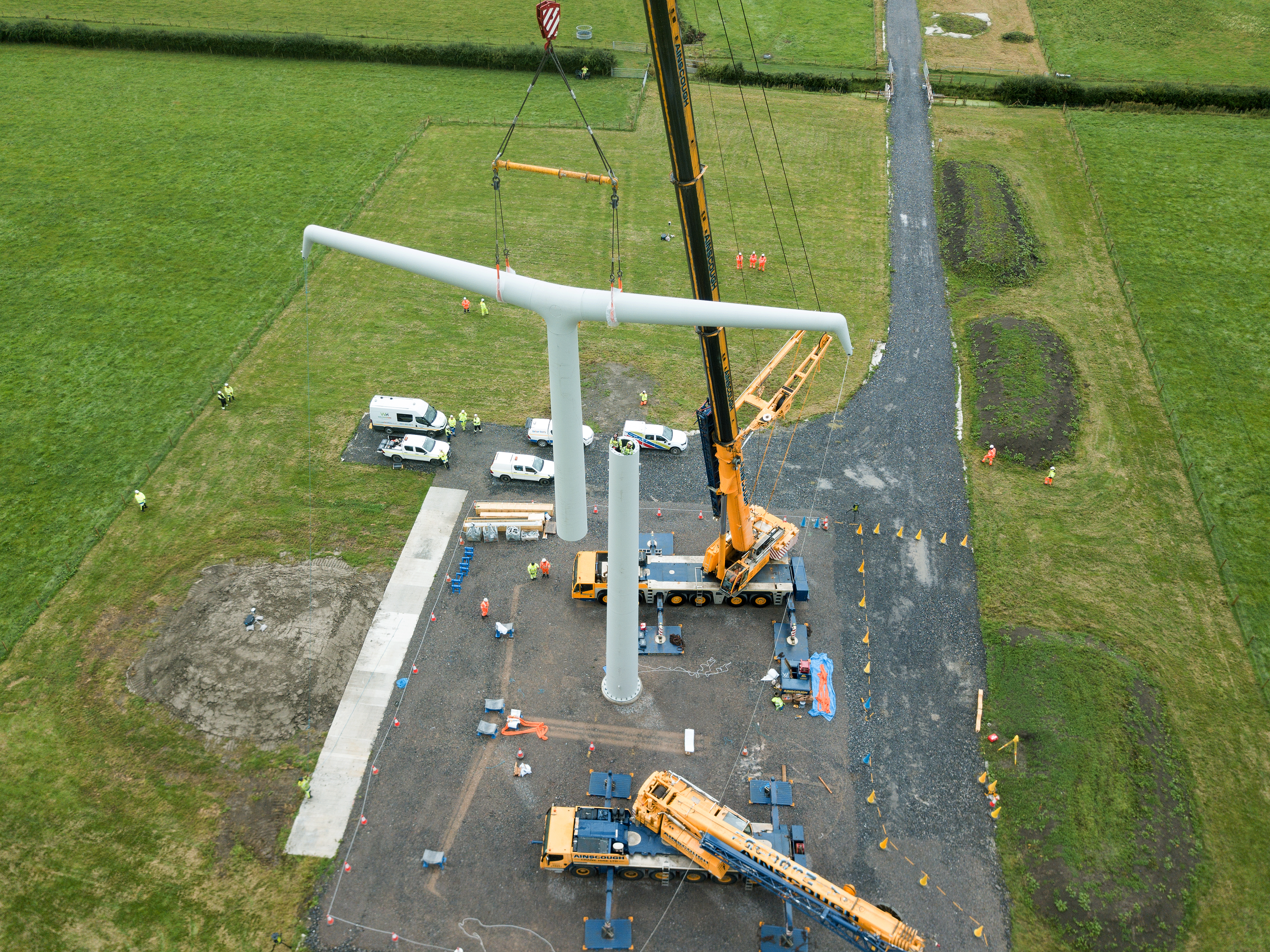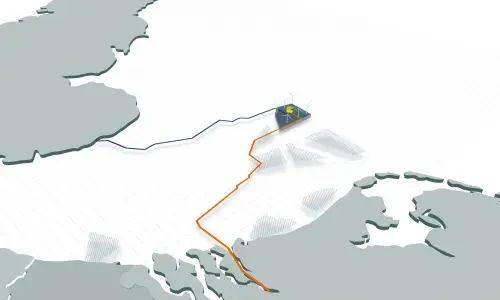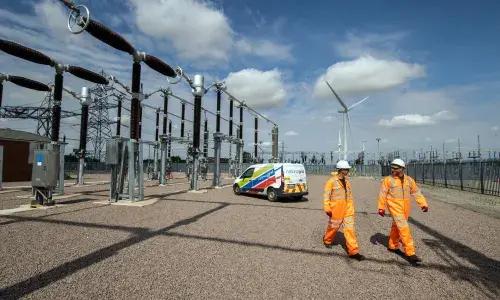
National Grid build world’s first T-pylon in Somerset
T pylons are the first new design for a pylon in Great Britain in nearly 100 years
116 new T-pylons will be erected in Somerset along a 57km route, connecting six million homes and businesses to low carbon energy
The T-design, with a single pole and cross shaped arms, is around a third shorter than traditional high-voltage pylon design with a smaller ground footprint
The new design adds to National Grid’s suite of approaches and technologies to mitigate the impact of electricity infrastructure on the landscape and environment
The world’s first T-pylon, the first new design for an electricity pylon in Great Britain for nearly a century, has been erected in Somerset.
It will be one of 116 T-pylons along a 57km route, connecting low carbon energy to six million UK homes and businesses. The T-pylons have a single pole and T-shaped cross arms which hold the wires in a diamond ‘earring’ shape. They are 35 metres high, a third shorter than National Grid’s traditional lattice pylons, and have a smaller footprint using less land.
The new pylons form part of National Grid’s Hinkley Connection project, a £900m investment to connect low carbon electricity from Hinkley Point C Nuclear power station. They will run between Bridgwater and Portbury, other than through the Mendip Hills AONB where the new connection goes underground. The project also includes the removal of 249 electricity pylons between Bridgwater and Avonmouth.
The new pylon design was selected from over 250 designs entered into an international competition run in 2011, organised by the Royal Institute of British Architects and government (the then Department of Energy and Climate Change). With a need for new energy infrastructure to enable progress towards net zero. The competition sought a new design to reduce impact on the local environment and surroundings.
T pylons form part of a suite of technologies used by National Grid to mitigate the impact of electricity infrastructure, including alternative lattice pylon designs and different types of underground and subsea cable systems. The appropriate approach for each new development or upgrade is assessed on a case-by-case basis, with each technology used based where it is operationally possible and cost efficient for electricity consumers. Currently there are no other planned sections of T pylons.
Construction of the first 48 T-pylons by Balfour Beatty on behalf of National Grid began last week near East Huntspill, with each pylon taking roughly 5 days to build. Construction of the remaining 68 pylons, north of Sandford will begin in 2022.
Chris Bennett, Acting President, National Grid Electricity Transmission said: “We are always looking for innovative new ways to mitigate the impact of our infrastructure on the natural environment and projects such as T pylons are a great example.
This new design forms part of our significant investment in the network in England and Wales, adding capacity onto the grid to deliver increasing amounts of low carbon energy and support the UK’s drive towards its net zero target."
Matt Steele, Balfour Beatty’s Managing Director for its Rail and Utilities business, said: “Our unique capability and extensive experience in delivering major, complex overhead line schemes, makes us ideally positioned to play a key role in constructing the world’s first T-pylons.
“We look forward to working with National Grid to successfully and safely deliver low-carbon electricity to millions of people, supporting the UK’s net zero ambitions.”
The Hinkley Connection project will be ready to connect to Hinkley Point C by the end of 2024, with the project complete at the end of 2025.
Background
- National Grid invests around £1.3 billion every year to adapt and develop Great Britain’s electricity transmission network.
- The T structure is the first amendment to the traditional lattice design in nearly 100 years. The lattice design, submitted to the competition by the Milliken Brothers, an engineering company based in the US, was the winning entry in a 1927 competition ran by the Central Electricity Generating Board chosen by architect Sir Reginald Blomfield.
- The 2011 competition was won by a Danish firm called Bystrup with the T pylon design.
- There are around 22,000 pylons stretching over more than 7700km (4300 miles) of high-voltage overhead lines in England and Wales.
- To ensure the lowest possible cost for consumers the body of the T-pylons being used to connect low carbon energy from Hinkley Point C are made in China, while the diamond-shaped structures are made in the UK.
- During consultation for the Hinkley Connection Project, local people showed a preference for T-pylons over our lattice pylons.
- National Grid is supporting local communities impacted by the Hinkley Connection project through a range of initiatives. So far these include more than £594,000 in 862 STEM grants given to 373 local schools, a total of £683,497 in community grants to 44 local projects plus an adult skills programme that has seen 300 local unemployed people gain a recognised construction qualification, helping an estimated 100 of those into employment.
Media information:
Helen Blake
[email protected]
T 07790 824788
Watch related video


